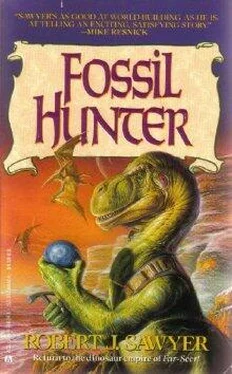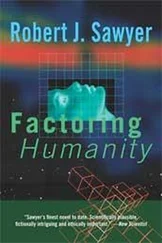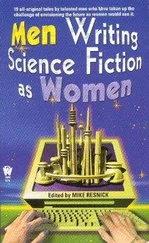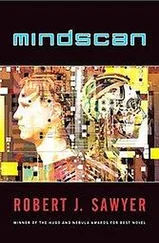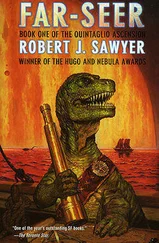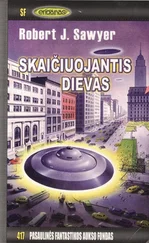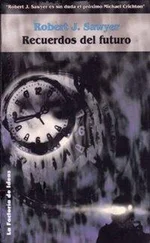Robert Sawyer - Fossil Hunter
Здесь есть возможность читать онлайн «Robert Sawyer - Fossil Hunter» весь текст электронной книги совершенно бесплатно (целиком полную версию без сокращений). В некоторых случаях можно слушать аудио, скачать через торрент в формате fb2 и присутствует краткое содержание. Год выпуска: 1993, ISBN: 1993, Издательство: Ace Science Fiction, Жанр: Фантастика и фэнтези, на английском языке. Описание произведения, (предисловие) а так же отзывы посетителей доступны на портале библиотеки ЛибКат.
- Название:Fossil Hunter
- Автор:
- Издательство:Ace Science Fiction
- Жанр:
- Год:1993
- ISBN:0-765-30793-4
- Рейтинг книги:5 / 5. Голосов: 1
-
Избранное:Добавить в избранное
- Отзывы:
-
Ваша оценка:
- 100
- 1
- 2
- 3
- 4
- 5
Fossil Hunter: краткое содержание, описание и аннотация
Предлагаем к чтению аннотацию, описание, краткое содержание или предисловие (зависит от того, что написал сам автор книги «Fossil Hunter»). Если вы не нашли необходимую информацию о книге — напишите в комментариях, мы постараемся отыскать её.
trilogy depicts an Earth-like world on a moon which orbits a gas giant, inhabited by a species of highly evolved, sentient Tyrannosaurs called Quintaglios, among various other creatures from the late cretaceous period, imported to this moon by aliens 65 million years prior to the story.
Fossil Hunter — читать онлайн бесплатно полную книгу (весь текст) целиком
Ниже представлен текст книги, разбитый по страницам. Система сохранения места последней прочитанной страницы, позволяет с удобством читать онлайн бесплатно книгу «Fossil Hunter», без необходимости каждый раз заново искать на чём Вы остановились. Поставьте закладку, и сможете в любой момент перейти на страницу, на которой закончили чтение.
Интервал:
Закладка:
He arrived at the table and bent from the waist, one arm outstretched to feel. At once he connected with something large and wet. He yanked his hand away, brought his fingers to his nostrils, inhaled the blood.
He reached down again, tentatively, and felt the object. It was warm. Heavy. Rounded. Covered with rough skin. He ran his fingertips over it. No scales, no scutes, just rough hide. Except here—little raised dots. Strange… they seemed to form a pattern.
A tattoo. A hunting tattoo.
Afsan staggered back, leaning against his tail.
It was a head. A Quintaglio head.
Sleeping, then, surely—
But it was wet. Wet with blood.
Afsan struggled to control the fear rising within him, and leaned in closer. He touched the back of the head, ran his fingers lightly down the bulbous braincase, over the thick neck muscles, their corded construction obvious even through the skin, and onto the broad shoulders.
The torso did not rise and fall with breathing.
He slid his hand around the shoulder, feeling the articulation between it and the upper arm.
Suddenly his hand was wet again. Just as suddenly, his fingers were inside—there was a fleshy shelf, and he felt soft tissue.
The mouth? Surely not so soon. And yet, it gaped like a toothless maw. Afsan’s heart pounded as he moved his hand along the soft, slippery surface, farther and farther and even farther still…
The throat had been slit wide open across its entire breadth. The head was propped forward, the length of its muzzle resting against the tabletop, leaving the cut yawning wide. As he touched it, the delicate balance was disturbed and the body slumped farther forward, the severed carotid arteries, too thick to simply crust over, spilling a torrent of new blood over Afsan’s hand and arm.
Revolted, Afsan yanked his arm away, but he realized, almost as an afterthought, that there had been no signs of the remains of a dewlap sack around the cut. A female.
He used his other hand—the dry one—to feel the leather of the sash crossing over the female’s chest. It was stiff with drying blood, but he easily found what he’d been afraid to find, the sculpted metal pin of a naturalist. It was Haldan.
Afsan reached out to the table to steady himself and felt his own hand slice open. He pulled it back instantly. The cut wasn’t very deep, but it stung. His claws, unnoticed, had extended on their own. Afsan tapped them against the wooden tabletop and found many sharp flat pieces of broken glass.
Afsan became aware of a sound: Gork lapping at the blood that had spilled on the floor. He groped for the lizard’s harness and yanked the beast away from the body.
For a moment, Afsan thought to run, to try to find help, but his mental picture of the room dissolved into a swirling nothingness, a panicked abyss. He forced himself to think, to reason. Any attempt at hurrying would just result in him tripping. If he could just—
But reason lasted only a few fleeting moments and without further thought, Afsan found himself leaning back on his tail and yelling and yelling and yelling until, after an eternity, help finally arrived.
*21*
In his cabin, the one that had been his father’s all those kilodays ago, Toroca examined the body of the diver by lamplight, the flame dancing to and fro as the Dasheter pitched on the waves.
The diver was an exquisite animal, about the length of Toroca’s arm and covered in fine silver fur. At first he didn’t know what to make of it. Fur was sometimes seen on certain plants, especially fungi and molds, and on the bodies of those flying reptiles known as wingfingers. Toroca had never heard of any land-dwelling or aquatic creature having it. Yet this one did: a good, thick coat of the stuff. He stroked it, saw that it had a nap, saw how it appeared to change color from a dark silver to almost white depending on which way the individual strands were deployed. It had an oddly revolting feel, this fur: thousands upon thousands of tiny fibers, moving back and forth almost like plants swaying in a breeze. He had to fight down the sensation that the filaments might pierce his skin, or fly loose to enter his nostrils or eyes. That the fur was oily just made the sensation even more unpleasant.
Although the body covering was disgusting, the creature’s head was fascinating. As he’d observed on the ice, it tapered to a pointed, toothed beak. Counterbalancing the beak was a long crest off the back of the skull, pointed in the opposite direction.
The diver had flippers held, in death, tightly against its side. Rigor hadn’t set in yet, although everything was a bit stiff in these cold temperatures. Toroca gently pulled the left flipper away from the body. He was surprised to find that it was rigid only along its leading edge. The rest of the flipper consisted of a thick mass of tissue, but seemed to be completely unreinforced by bone. In the middle of the flipper’s leading edge were three small red claws.
That was unusual. Five was the normal number of digits, of course. Some creatures, Quintaglios and blackdeaths among them, had fewer on their feet, and blackdeaths had only two on their hands. But three on the forelimbs was a rare number. Toroca took out his scalpel and sliced into the flipper, gently exposing the inner flesh.
Dark blood spilled out onto the worktable. He carved further into the flipper and saw that it was well padded with yellow fat. But it was the leading edge that he really wanted to see. He made an incision along the entire length of the flipper’s anterior margin, then used his hands to pull back the clammy flesh. It took a little twisting and yanking, but he soon had the bones that made up the front of the flipper exposed.
From the shoulder to the claws, there were two long bones, obviously the humerus and the radius—the upper and lower arm bones. At the end of the radius, there were the phalangeal bones of the three red-clawed fingers that protruded from the flipper, and then running along the remaining length of the flipper, from this tiny hand to its outermost tip, four long bones.
Four extraordinarily long phalangeal bones.
The bones of a fourth, vastly extended finger.
It was the same structure as in a wingfinger’s wing, the structure that gave those flying reptiles their name.
Toroca rolled the corpse over and pressed his own fingers into the corpse’s belly. They came up against a hard plate of bone.
A breast plate.
Suddenly the head crest made sense. Just like those in some flying reptiles.
This beast was a wingfinger.
A water-going wingfinger.
A wingfinger that swam through the cold waters the way its equatorial cousins flew through the air.
Toroca staggered back on his tail, the lamp flickering, the timbers of the ship groaning.
How does a wingfinger come to be a swimmer? How does a flyer take to the water?
What caprice of God was this?
*22*
Var-Gathgol, the undertaker, felt out of his depth. It was bad enough that blind Afsan was here. Senior palace officials always were difficult to deal with. But now the Emperor himself had arrived. Gathgol had no idea how to behave in front of such important people.
Dybo was standing near Afsan—altogether too near, really; such easy proximity was uncomfortable even to watch. Gathgol had hoped to simply slip in, bundle up the body, and take it away in the wagon he had left outside the apartment block.
But someone—Gathgol thought perhaps it was the building’s administrator—had told him not to touch the corpse.
It was, indeed, an unusual set of circumstances.
Suddenly Gathgol felt a frightened rippling at the tips of his fingers. The Emperor himself was gesturing at him. At first Gathgol froze, but the waving of the Emperor’s arm became impatient and that spurred him into motion. He hurried across the room, taking care to avoid the pieces of broken glass on the floor.
Читать дальшеИнтервал:
Закладка:
Похожие книги на «Fossil Hunter»
Представляем Вашему вниманию похожие книги на «Fossil Hunter» списком для выбора. Мы отобрали схожую по названию и смыслу литературу в надежде предоставить читателям больше вариантов отыскать новые, интересные, ещё непрочитанные произведения.
Обсуждение, отзывы о книге «Fossil Hunter» и просто собственные мнения читателей. Оставьте ваши комментарии, напишите, что Вы думаете о произведении, его смысле или главных героях. Укажите что конкретно понравилось, а что нет, и почему Вы так считаете.
